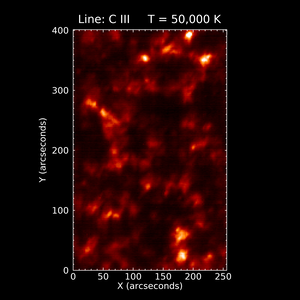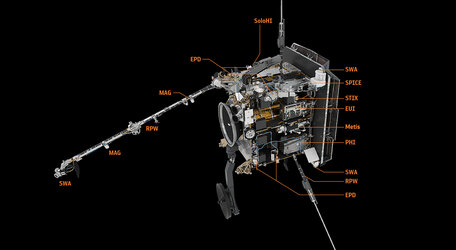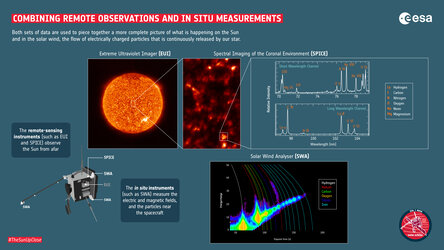Accept all cookies Accept only essential cookies See our Cookie Notice

About ESA
The European Space Agency (ESA) is Europe’s gateway to space. Its mission is to shape the development of Europe’s space capability and ensure that investment in space continues to deliver benefits to the citizens of Europe and the world.
Highlights
ESA - United space in Europe
This is ESA ESA facts Member States & Cooperating States Funding Director General Top management For Member State Delegations European vision European Space Policy ESA & EU Space Councils Responsibility & Sustainability Annual Report Calendar of meetings Corporate newsEstablishments & sites
ESA Headquarters ESA ESTEC ESA ESOC ESA ESRIN ESA EAC ESA ESAC Europe's Spaceport ESA ESEC ESA ECSAT Brussels Office Washington OfficeWorking with ESA
Business with ESA ESA Commercialisation Gateway Law at ESA Careers Cyber resilience at ESA IT at ESA Newsroom Partnerships Merchandising Licence Education Open Space Innovation Platform Integrity and Reporting Administrative Tribunal Health and SafetyMore about ESA
History ESA Historical Archives Exhibitions Publications Art & Culture ESA Merchandise Kids Diversity ESA Brand Centre ESA ChampionsLatest
Space in Member States
Find out more about space activities in our 23 Member States, and understand how ESA works together with their national agencies, institutions and organisations.
Science & Exploration
Exploring our Solar System and unlocking the secrets of the Universe
Go to topicAstronauts
Missions
Juice Euclid Webb Solar Orbiter BepiColombo Gaia ExoMars Cheops Exoplanet missions More missionsActivities
International Space Station Orion service module Gateway Concordia Caves & Pangaea BenefitsLatest
Space Safety
Protecting life and infrastructure on Earth and in orbit
Go to topicAsteroids
Asteroids and Planetary Defence Asteroid danger explained Flyeye telescope: asteroid detection Hera mission: asteroid deflection Near-Earth Object Coordination CentreSpace junk
About space debris Space debris by the numbers Space Environment Report In space refuelling, refurbishing and removingSafety from space
Clean Space ecodesign Zero Debris Technologies Space for Earth Supporting Sustainable DevelopmentApplications
Using space to benefit citizens and meet future challenges on Earth
Go to topicObserving the Earth
Observing the Earth Future EO Copernicus Meteorology Space for our climate Satellite missionsCommercialisation
ESA Commercialisation Gateway Open Space Innovation Platform Business Incubation ESA Space SolutionsLatest
Enabling & Support
Making space accessible and developing the technologies for the future
Go to topicBuilding missions
Space Engineering and Technology Test centre Laboratories Concurrent Design Facility Preparing for the future Shaping the Future Discovery and Preparation Advanced Concepts TeamSpace transportation
Space Transportation Ariane Vega Space Rider Future space transportation Boost! Europe's Spaceport Launches from Europe's Spaceport from 2012Latest
Solar Orbiter observes an active region on the Sun
Thank you for liking
You have already liked this page, you can only like it once!
The Sun seen by Solar Orbiter on 3 March 2022, during the spacecraft's first close approach to the Sun. This view was part of an important piece of research that opens up a new way for solar physicists to study the source regions of the solar wind.
The main, largest image was taken with the full Sun imager mode of Solar Orbiter's Extreme Ultraviolet Imager (EUI) instrument. The medium-sized image that appears after about five seconds was taken with EUI's high-resolution mode. The third, smallest image was taken with Solar Orbiter's Spectral Imaging of the Coronal Environment (SPICE) instrument.
The Sun's active regions are often responsible for solar flares and eruptions. Visual indicators of active regions are dark sunspots – cooler areas in the Sun's photosphere where intense magnetic fields become twisted and concentrated. The magnetic activity that creates sunspots is thought to be connected to the so-called ‘slow’ solar wind.
In this research, a team led by Stephanie Yardley from Northumbria University imaged an active region of the Sun with Solar Orbiter's EUI, SPICE and Polarimetric and Helioseismic Imager (PHI) instruments, before measuring the resulting slow solar wind with the spacecraft's in situ instruments several days later. This is the first ever connection between high-resolution images of the Sun’s surface at a close distance and direct measurements of the solar wind around a spacecraft. It allowed the scientists involved in the research to identify more clearly where the slow solar wind originates and opens up a new way for solar physicists to study the source regions of the solar wind.
-
CREDIT
ESA & NASA/Solar Orbiter/EUI & SPICE/S. Yardley -
LICENCE
ESA Standard Licence
-
Closed captions available Captions and subtitles are available (automatically generated by YouTube) - select your language using the YouTube player controls. A non-YouTube version is available using the 'download' button above.
-
Animation
-
-
-

Solar Orbiter observes an active patch of the Sun

Solar Orbiter’s SPICE will help reveal the mysteries…

Solar Orbiter’s SPICE will help reveal the mysteries…

Solar Orbiter instruments















 Germany
Germany
 Austria
Austria
 Belgium
Belgium
 Denmark
Denmark
 Spain
Spain
 Estonia
Estonia
 Finland
Finland
 France
France
 Greece
Greece
 Hungary
Hungary
 Ireland
Ireland
 Italy
Italy
 Luxembourg
Luxembourg
 Norway
Norway
 The Netherlands
The Netherlands
 Poland
Poland
 Portugal
Portugal
 Czechia
Czechia
 Romania
Romania
 United Kingdom
United Kingdom
 Slovenia
Slovenia
 Sweden
Sweden
 Switzerland
Switzerland



























